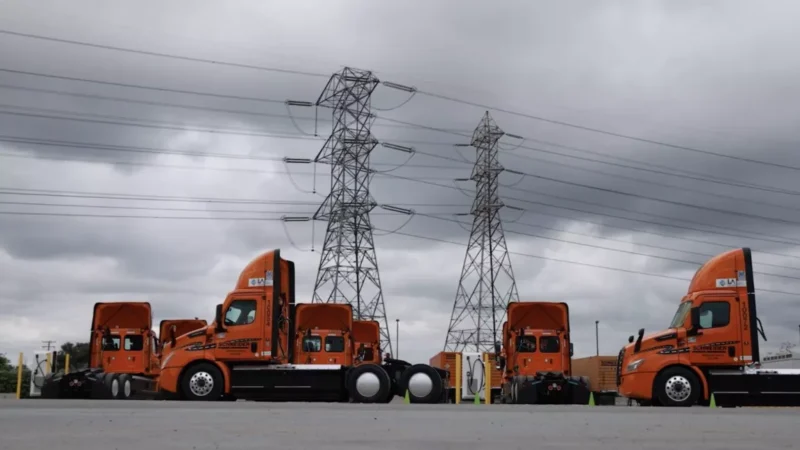Sign up for daily news updates from CleanTechnica on email. Or follow us on Google News!
This action marks an important step in reducing delays that could undermine progress toward the state’s climate and air quality standards. But it doesn’t go far enough.

The California Public Utilities Commission approved a new set of timelines to accelerate the connection of new residential buildings, commercial businesses, and electric vehicle (EV) charging stations to the electrical grid. This decision, which applies to California’s three largest investor-owned utilities—Pacific Gas and Electric Company (PG&E), San Diego Gas & Electric (SDGE), and Southern California Edison (SCE)—marks an important step in reducing delays that could undermine progress toward the state’s climate and air quality standards. But it doesn’t go far enough.
The decision implements the Powering Up Californians Act (Senate Bill 410) that was passed in 2023. This law tasked the commission and utilities with ensuring the grid is ready to support EV charging and building electrification at scale.
Key components of the commission’s decision
- New energization targets: For most residential, public, and workplace EV charging stations, the commission set an average energization target of 182 days (about six months) and a maximum of 335 days (about 11 months)—a 49 percent improvement compared to the status quo across the state.
- New maximum timelines for grid capacity upgrades: For projects like large, public fast-charging plazas or sites with multiple high-powered commercial truck chargers that often require more significant grid upgrades, the decision sets a maximum timeline of 1.8 years for circuit upgrades, 2.8 years for substation upgrades, and 8.9 years for new substations. Those maximum timelines reflect the current average time to complete such projects, which means the utilities will need to improve their averages significantly going forward.
- Transparency, accountability, and future improvement: A framework for tracking energization activities and biannual reports will hold utilities accountable for delays, identify bottlenecks, and inform future, more aggressive timelines.
- No priority given to projects needed to meet climate and air quality laws: Citing a lack of data, the commission declined to establish timelines that prioritize EV charging and other forms of beneficial electrification that are necessary to comply with state and federal climate and air quality standards and laws, but it left the door open to doing so in the future.
A positive first step, but more work is needed
Going forward, the commission should:
- Establish timelines that prioritize projects that are necessary to comply with state and federal laws: The commission declined to adopt timelines that prioritize projects like EV charging. In fact, at one point, it even erroneously claimed it couldn’t do that because of a generic provision of the Public Utility Code. But SB 410 amended the code to tell the commission to establish energization targets that “prioritize work in a manner consistent with” achieving “the state’s decarbonization goals and implement federal, state, regional, and local air quality and decarbonization standards, plans, and regulations.” Thankfully, the final decision ditched the faulty legal argument and left the door open to establishing timelines that prioritize projects like EV charging, which are necessary to comply with state laws and regulations.
- Accelerate timelines for smaller EV charging and building projects: The commission’s energization timelines for smaller projects basically require that PG&E and SDGE catch up to SCE’s status quo performance. While SCE is performing better than its sister utilities, not all is rosy in sunny Southern California. Frustration about energization delays in SCE territory, which is a national hub for goods movement, spurred the introduction and passage of SB 410. As the commission revises the targets for smaller building electrification and EV charging projects, it should drive significant improvement over business as usual efforts for all utilities.
- Accelerate timelines for large EV charging projects: Fast-charging plazas for passenger vehicles and big charging stations for commercial trucks often require significant infrastructure, such as upgrades to substations (or new substations). Due to a lack of data provided by PG&E and SDGE, the commission established maximum timelines for these larger projects based on SCE’s current average performance, allowing up to nine years for new substations. While a maximum cap based on a current average will drive improvement, these timelines are simply not aligned with California’s climate and air quality standards that have fast-approaching regulatory deadlines. SB 410 told the commission to correct that misalignment. The state’s air quality regulators and the commission need to get together and do just that—work backward from regulatory compliance deadlines to figure out when steel needs to go into the ground so California can comply with federal and state climate and air quality standards.
What’s on the line?
- Public health benefits: According to the American Lung Association, electrifying California’s transportation sector could yield $160 billion in health benefits, prevent 15,300 premature deaths, 440,000 asthma attacks, and nearly 2.2 million lost workdays.
- Fuel cost savings: Despite the fact that electricity is more expensive than it should be in California, driving an average EV sedan is still the cost equivalent of driving on $2.62 per gallon of gasoline, more than a 40 percent savings compared to the current $4.75 per gallon average price.
- Reduced electric bills: EV charging brings in more money than it costs utilities to serve, and that net revenue is returned to all utility customers in the form of rates and bills that are lower than they otherwise would be. The California Public Advocates Office, the state’s official consumer advocate, compared the costs associated with upgrading the grid to accommodate light-, medium-, and heavy-duty EVs as well as building electrification to the resulting revenue, concluding: “All ratepayers, even those who cannot (or choose not to) electrify, could financially benefit from electrification.” The California Public Utilities Commission came to the same conclusion in its future affordability study. And it’s already happening: EV drivers in California contributed $2.2 billion more than they cost to serve between 2011 and 2021, according to a new study. This means that EVs are already putting downward pressure on electric rates, which is a bright spot in an affordability crisis.
To realize those huge public health, climate, and economic benefits, we need to plug in our cars, trucks, and buses. To do that, we need to connect chargers to the grid at speed and scale.
We know we can do this because we’ve done it before. In 1879, the nation’s first central power plant began serving a handful of customers in San Francisco, a tiny fraction of the state’s 860,000 residents. California’s electrical grid grew exponentially thereafter, extending universal electricity service to 39 million people. It’s time to go back to the future.
By Beth Hammon, Senior Advocate, EV Infrastructure, Climate & Energy Courtesy of NRDC.

Have a tip for CleanTechnica? Want to advertise? Want to suggest a guest for our CleanTech Talk podcast? Contact us here.
Latest CleanTechnica.TV Videos
CleanTechnica uses affiliate links. See our policy here.
CleanTechnica’s Comment Policy





